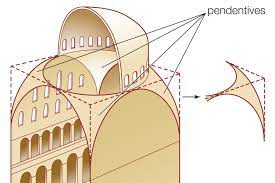 |
| from "Fifteen Decisive Battles of the World" by Sir Edward Creasey, 1851 |
Sources for the Battle are surprisingly numerous, although all must be considered through the filter of historical prejudice (for instance, English sources emphasize the size of William's army over Harold's). We can collate them, however, and make an educated estimate as to the chronology of the battle.
The first point to remember is that William had two weeks since making shore at Hastings to arrange his army, since Harold was defeating a Norwegian invasion up north. Inexplicably, the Normans had not taken the high ground during this fortnight. Harold's army arrived on 13 October; William arranged his Norman forces in case of a night attack. The morning of the 14th, Harold began to arrange the English on Senlac Hill*; before they were completely organized, however, William attacked at about 9:00 in the morning.
The battle likely included several Norman retreats (mentioned by several sources), both real and feigned, which caused the English to follow with sometimes disastrous results, finding themselves outside their defenses and their advantageous high ground and prone to being surrounded and killed when the Norman retreat reversed course. Even with these events, however, and the general exhaustion of Harold's army, the English might have held off longer against the Normans. Late in the day, however, a stray arrow hit Harold in the head, possibly piercing his eye. Harold's brothers already having died earlier in the day, the army was left with no clear leader.
The English went into retreat, pursued by the Norman cavalry. This would have been in the evening, when darkness made pursuit risky. The English probably paused at a broken rampart which they attempted to use for defense, and there is an account that many of the Norman cavalry perished when they rode headlong into a ditch. Still, the English were done with the battle. William returned to his camp at Hastings, and began a campaign that lasted many months to subdue the rest of the country.
William assumed that his way to the throne was clear. There was, however, another claimant to the throne of England—a legitimate claimant. We will look at that story tomorrow.
*There is a claim that the battle took place not on Senlac Hill but on Caldbec Hill a mile away. The author's evidence has swayed some, but tradition has not yet given in.




























